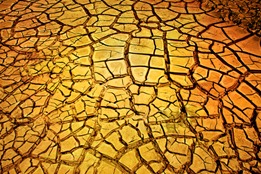Two More Americas, Consuming the Planet
by Chandran Nair, NEW YORK TIMES, June 6, 2011
 Try to imagine a world with three Americas. Three giant economic powerhouses, with citizens who buy, sell and consume, all in pursuit of their versions of the American Dream. Difficult to envision? But that’s where economists say we’re heading.
Try to imagine a world with three Americas. Three giant economic powerhouses, with citizens who buy, sell and consume, all in pursuit of their versions of the American Dream. Difficult to envision? But that’s where economists say we’re heading.
The broad consensus is that China will overtake the U.S to become the world’s biggest economy within two decades. And by 2050, India will be as big as well.
This prospect excites many people — those in business most of all, but also Asian governments. After decades of hard work and struggle, hundreds of millions stand on the brink of middle-class abundance.
On current trends, the World Bank and the International Monetary Fund expect global economic output to grow between six- and sevenfold between 2005 and 2050. As it does, Asia’s total G.D.P. will grow from around $30 trillion now to about $230 trillion.
This is an astonishing number. But is it really desirable — or even possible?
If the United States is joined by two more economic masses as big (or rather, bigger, as on current trends the American economy will also have trebled in size by mid-century) our planet will become unimaginably stressed.
Already we have passed the earth’s regenerative capacity, yet this is hardly factored into economic projections about growth.
Take energy. If the Chinese and Indians were to use as much energy per capita as Americans use, their total power consumption would be 14 times as great as that of the United States.
Even if Asians were to restrict themselves to lower European levels of energy usage they would still consume eight to nine times as much power as America does today.
However we look at it, the world cannot expect to see its energy usage grow by such an extent. Conventional forms of power generation will produce carbon in such volumes that our planet will be condemned to unmanageable climate change, while the alternatives — even nuclear power — are simply not viable within the time frames mentioned.
Or take cars. Estimates suggest that if China, India and other developing countries reach Western levels of car ownership, there could be 3 billion cars in the world, four times the current total, within four decades. Where will the fuel come from for these vehicles, and what about their environmental impact?
Similar calculations can be made for everything from chickens to iPads. Quite simply, this world just does not have enough for two more consumption-driven Americas.
Politicians, economists and businessmen remain in denial, using the crutch of technology, free markets and finance to spin messages about innovation and hope. But hope is not a plan.
Asian governments must reject the blinkered views of those who urge Asians to consume relentlessly — be they Western economists and leaders who want the region to become a “motor of growth” to rebalance the world economy or Asian governments convinced that ever-expanding economies are what their populations need.
That is not to suggest that people must remain poor. Nor is it an argument against economic development. Rather it is call for constrained consumption, funneled in ways that do not increase the demands on our resource base; deplete or degrade our environment; produce more emissions and pollutants, and put at risk the livelihood and health of millions.
If Asia is to achieve prosperity for the broad majority of its population, the countries of the region must find alternative ways of promoting human and economic development. What Asia must prioritize are incentives that reward “more is less” activities — ones built around putting the management of resources at the center of all policy-making.
The crucial first steps in this direction are carbon and resource taxes that provide incentives for companies to use far fewer materials and far less energy in their products. This in turn will change consumption habits. [Read rest of story]


